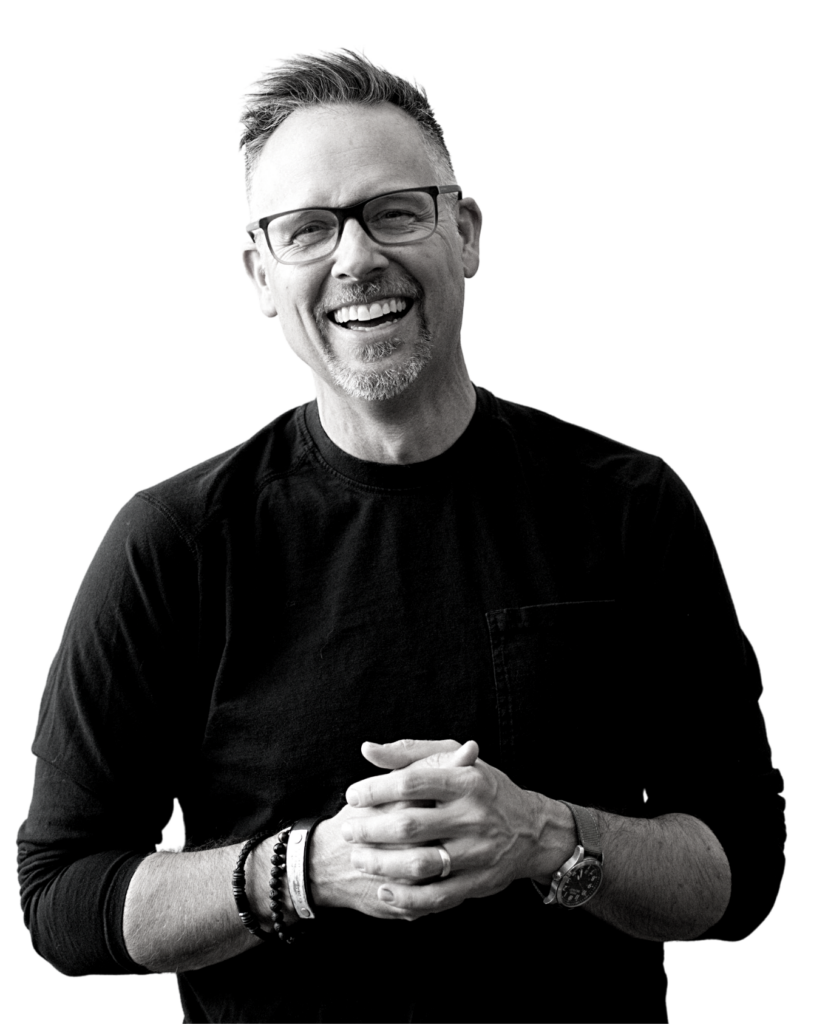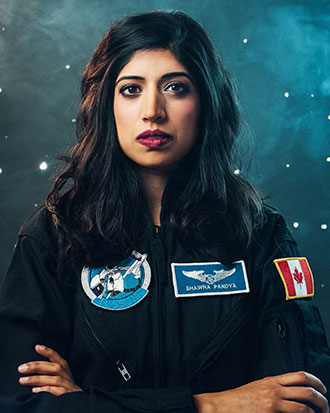

A diverse lineup of speakers is set to present at next week’s ciLive! (Celebrate Innovation Live) event, including physician, astronaut and aquanaut Dr. Shawna Pandya, and Iowa native Mitch Matthews, a coach, speaker and host of the podcast “Dream Think Do.”
While Matthews and Pandya have different encounters with innovation day to day, they prove that it can be practiced anywhere and in a multitude of ways.
Below, they share with the Business Record their experiences with innovation and discuss demystifying the practice and how to engage in it.
The 14th annual ciLive! event is on Thursday, March 9, at the Des Moines Area Community College West Campus in West Des Moines from 10 a.m. to 5 p.m. More details about attending are available on ci.live.
This Q&A has been lightly edited and condensed for clarity and length
What does innovation in action look like to you?
Pandya: I actually teach a university-level course called technology and the future of medicine and we talk all about exponential technologies, future of medicine, innovation, and I ask that question to my students all the time. To help get them thinking into this mindset and then into believing their own power to institute change. I ask some key questions, including “How can this be better?” And then take it a step further and say, “How can I make this better” so they look at their own specific skill set and expertise. I think the two most powerful words that we can ask the question are, “What if?” What if this were easier? What if this were more convenient? What if we could solve this problem and then start thinking about it from a problem-solving approach rather than as a crisis? I run workshops with my students on engineering the future they want to see, and it all boils down to “What is the first step?”
Matthews: When I speak on innovation, one of the things that I always really want to encourage audiences and organizations to think about is applicable innovation, because I think so often when innovation gets talked about, it gets put into the category of what could we do if we go away for a three-day retreat in a mountain cabin somewhere, as opposed to applicable innovation to be able to say, “All right, what’s something that we can do that can inspire an innovative thought, a new solution, something that we could actually take action on in two minutes or less?” I always say so often that one of the best ways to get there is an open mind and a better question. An open mind, it starts with what if anything was possible, but also to say, “All right, what’s a better question?” What if we wanted to just try to make something remarkable?
I will often say one of the best ways for an organization to be innovative is to allow more people to have input, because so often the people who are actually trying to innovate a product or a service, they don’t always tend to be the consumer of that product or service, but there’s usually somebody in the organization that is an actual user of that product or service, so how do we get that input, whether it’s within the organization or outside the organization, how do those short feedback loops of getting input from people that could actually help you to do that? But honestly, so often, two minutes and a better question can really produce innovative solutions that can be applied almost immediately.
“When we come to big terms, whether it’s innovation or fear or resilience, those terms strike trepidation and dread in people because they seem like such big terms. … The thing is, all of these things can be demystified.”
— Shawna Pandya
What is a challenge to innovation you have seen others experience?
Matthews: So often [innovation] is asking that bigger question, really trying to stretch. But what’s interesting is that sometimes it’s going for a big change that can be stifling. That can actually cause people to be stuck. Interestingly enough, Toyota, who is one of the most innovative organizations on the planet, especially when it comes to manufacturing, they get a lot of their ideas from an internal innovation pipeline. They have ways for employees to submit ideas. They had just experienced a bunch of big breakthroughs. They had just been featured in the media for these different innovations and new product lines and all these kinds of things, and all of a sudden they noticed their innovation pipeline had dried up.
People stopped submitting new ideas, and what they figured out was people were holding off because they didn’t feel like their idea was big enough. So instead of saying, “Hey, what’s the next big breakthrough?” They asked a better question for what they needed in that season, and that was “How can we improve things incrementally?” Instead of the pressure of, it’s got to be this new, amazing thing, how can we make little changes, what little changes are we missing? How can we improve this incrementally?
Pandya: When we come to big terms, whether it’s innovation or fear or resilience, those terms strike trepidation and dread in people because they seem like such big terms. It’s like, “Well, I don’t know how to innovate. I’m not resilient like the other person next to me. I don’t know how to overcome my fear.” The thing is, all of these things can be demystified. There’s research around innovation, on how to apply principles of resilience, on how to demystify fear. I talk about fear and resilience in detail in my talk, but coming to innovation, when I teach my students, I cite case studies from the Harvard Business Review that actually look at innovative leaders from Intel, from Fortune 500 companies that say it’s not just “You’re more innovative than I am.”
There are traits, whether it’s observation, association, questioning, experimentation, networking, and then you realize that we can break this down. Resilience is like that too. We break tough things down into their core components and then you start applying it. Coming back to the earlier component of innovation, simply say, “What if?” or “How can this be better?” and then take it a step further, or take two different disciplines that normally work within their silos and encourage that association through crosstalk so those relative silos of experience can come together to cover a blind spot or gap that wouldn’t otherwise be covered.
What are some of the passions or drivers in your life that set you on your path?
Matthews: It’s interesting, if you boil my job down, for the most part, I feel like I was put on the planet to help people figure out why they were put on the planet. That comes out in a number of different ways. I actually grew up a worried kid. I had health issues and all sorts of things, so I found worry really easy. For a while, I didn’t get better at handling it, I got better at hiding it. A mentor once said the opposite of fear is not bravery. The opposite of fear is curiosity, because if you can get curious about something, then you’ll generally be able to push past the fear that might be holding you back to get to the truth that you’re actually looking for. I have just gotten curious.
Part of the reason why “Dream Think Do” exists is I just started thinking about different types of people that I want to have conversations with and I thought, “Hey, a podcast would be a good excuse for that.” The podcast is called “Dream Think Do,” which we hope is catchy, but it’s also a three-step process I believe in. We’re trying to inspire people to dream bigger, think better and do more of what they were put on the planet to do. Everything I teach is because I needed it or continue to need it daily so that’s my wheelhouse is I’m kind of an experiment in progress and I’ll let you know what worked for me and others along the way.
Pandya: I think this really speaks to the value of representation because I was a kid growing up in the ’90s when Canada’s first-ever female astronaut, Dr. Roberta Bondar, flew to space and I was just tremendously inspired by that. The Canadian postal service had put out these memorabilia stamps commemorating space and spaceflight, and I would read all of them and be obsessed with the gravity level on Jupiter. Coming back to Dr. Bondar’s journey, I was like, “That’s amazing. She’s Canadian. I’m Canadian. She’s female. I’m female. Now all I need to do is be a neuroscientist, physician and then astronaut — that’s the path.”
To me it was that simple, and that’s really what inspired me to pursue this path towards space. By the time I was 15 I was convinced I was going to go to medical school, be a neurosurgeon. Having that inspiration along with doing outdoorsy stuff and growing up being an adventurous kid, that really set the path for what I ended up pursuing in adulthood. The craziest thing about being an adult is just realizing that with hard work and with ambition, the goals you set for yourself, the dreams you had for yourself, as a child, you can even surpass in ways you never deemed possible.